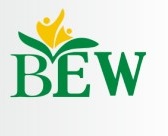


A reaper machine streamlines the harvesting process, saving time and labor. Learn what affects its price and how to choose wisely.
Modern agriculture relies heavily on machinery to improve efficiency and reduce dependence on manual labor. One of the most important machines during the harvesting season is the reaper, which cuts standing crops such as wheat, rice, barley, oats, and other grains. With various types of reapers available in the market today, knowing the price range and the factors that influence it can help farmers make a smart, well-informed purchase.
A reaper machine is designed to harvest crops by cutting them close to the ground and laying them in neat rows. This process not only saves time but also prepares the crop for easy collection and further processing. Reapers are typically categorized into three main types:
Manual or Push-Type Reapers: These are small machines operated by hand, ideal for small farms or plots with limited space.
Tractor-Mounted Reapers: These attach to a tractor and cover more ground in less time.
Self-Propelled Reapers: Equipped with their own engine, these machines offer high efficiency and mobility, suitable for large-scale farming.
The price of reaper machines in 2025 varies depending on the model, capacity, and features. Here’s an estimated range:
Manual Reapers: ₹30,000 – ₹50,000
Tractor-Mounted Reapers: ₹60,000 – ₹1,20,000
Self-Propelled Reapers: ₹1,20,000 – ₹2,00,000+
The prices may fluctuate based on geographic location, dealer pricing, and whether any custom features or accessories are included.
Several factors contribute to the cost of a reaper machine:
Wider cutting blades allow the reaper to cover more land in less time, which increases productivity—but also raises the price.
Machines made from heavy-duty, rust-resistant materials are priced higher but offer greater longevity and performance under tough field conditions.
Self-propelled reapers have their own engines, making them more expensive than those that rely on manual labor or tractors. Compact designs with better maneuverability also affect cost.
Models with adjustable blade height, safety guards, low maintenance requirements, and ergonomic controls tend to be more expensive but offer better user experience.
Though the upfront cost can be significant, the long-term benefits make a reaper machine a valuable investment:
Time Savings: Harvesting is completed faster, freeing up time for other farm tasks.
Labor Reduction: Fewer workers are needed during peak harvest season, which lowers labor costs.
Minimized Crop Loss: Timely harvesting reduces losses due to over-ripening or bad weather.
Consistent Cutting: Uniform cutting improves post-harvest handling and reduces grain wastage.
Before buying, farmers should evaluate their needs based on:
Farm size
Type of crops
Available power source (manual, tractor, or fuel-based)
Budget
Long-term usage plans
Opting for a machine that balances cost, efficiency, and durability will yield the best returns.
The reaper price in 2025 reflects growing demand for farm mechanization and improved harvesting efficiency. While price varies depending on features and capacity, the right reaper can save time, cut costs, and significantly boost farm productivity. For any farmer looking to modernize operations, investing in a reaper is a step toward sustainable and profitable agriculture.
